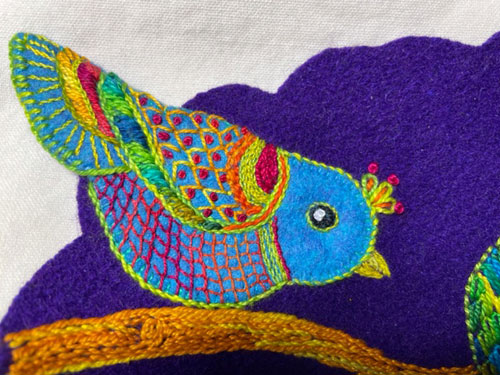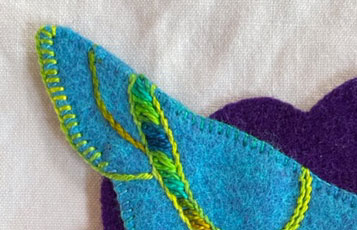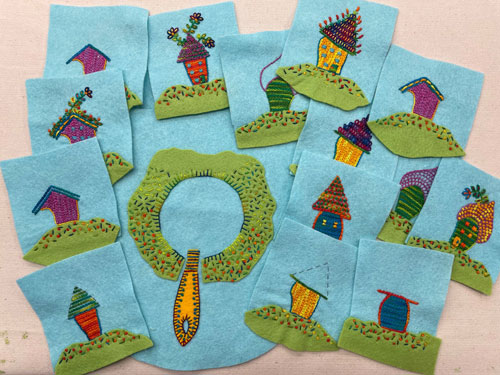
Ever have a vague idea but no plan for how to execute that vague idea? That’s me! Here you see step-outs from my book Playful Free-Form Stitching. I want to combine them somehow to create a new embroidery (vague idea) but have no idea where I’m going (no plan).
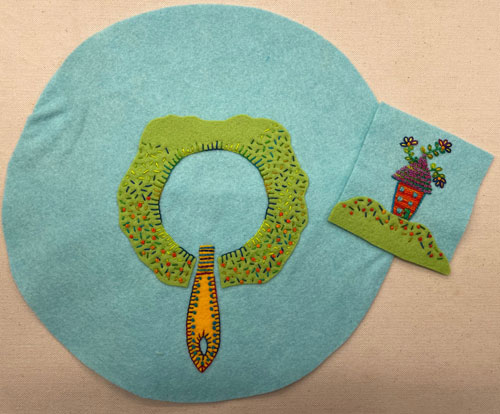
So I put on my thinking cap, as my 3rd-grade teacher said, and try to visualize a composition. After discarding all of the houses but one, I decide to join it to the circular shape. You may recognize this as the background fabric and brush handle from the Painting the Town project.
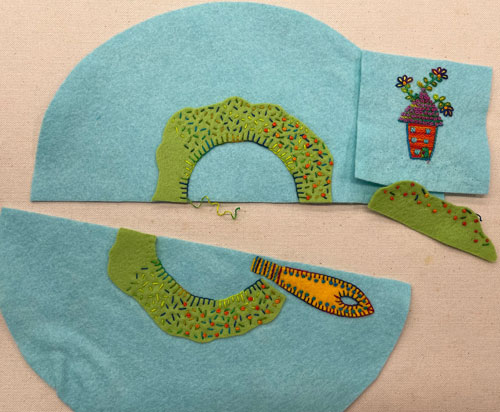
After auditioning different arrangements of the house on the brush handle, I give up. Instead, I cut the confounded circle in half. I’ll use the top arc and the orange house and quietly slip the brush handle part into a secret drawer. There, I feel much better and may even have a plan.
Stay tuned!


